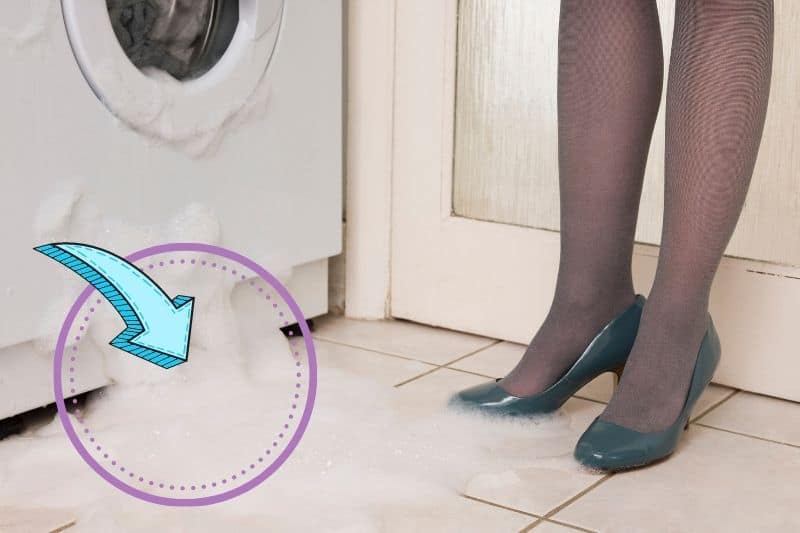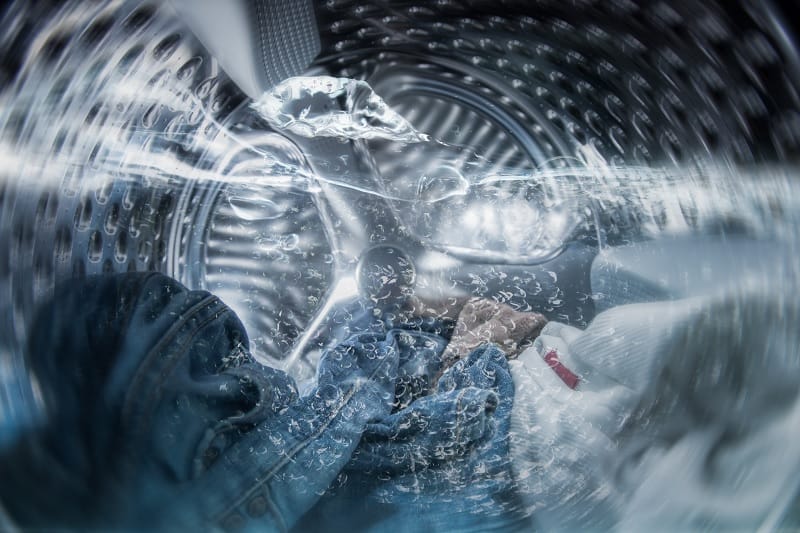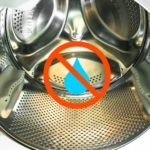A washing machine that leaks can cause mayhem in a home. Not only will you be worried about using the washing machine to wash your clothes, but the water can also cause severe damage to your floors and cabinets!
But, like with most things, if the problem is dealt with early enough, a lot of the consequences can be kept to a minimum. So, let’s find out why water is leaking from the bottom of your washing machine.
Where Is the Leak Coming From?
Before you can attempt to solve your leaky problem, you need to determine where the water is coming from. Here are the areas that are most likely to cause your watery problem:
- Water hose
- Drain hose
- Seals and gasket
- Door
- Water pump
- Too much detergent
- Washing machine is not level
- Clogged filter
As you can see, not all of the areas listed above are necessarily at the bottom of your washing machine.
However, you often find that when water leaks out of a machine it usually finds its way to the floor – hence the bottom of the appliance. It’s worth checking out all of the areas listed above, just in case.
Once you know where the problem is coming from, you can look at what could cause such a problem and you can look into ways of solving the issue.
Keep on reading to find out the most common causes.
Causes
There are a number of reasons why water is pooling at the bottom of your washing machine.
Below is a list of the most common causes. Plus, I’ve listed some possible solutions to resolve the issue!
Cause 1: Hoses – water and drainage
The water hose is responsible for getting water into the washing machine when a cycle is being run.
The drainage hose, on the other hand, drains away the wastewater from the washing machine after a cycle has finished.
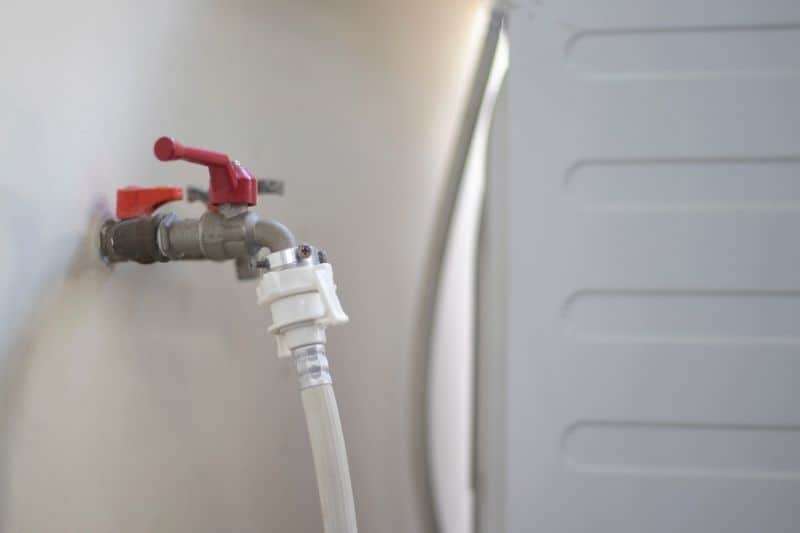
Given the fact that water flows through these hoses, there’s a really good chance that this is where the water, found at the bottom of your washing machine, is coming from.
These hoses can become loose over time, blocked, and sometimes when a machine ages, parts become worn down and start to leak. This is quite common.
Solution:
If you think that the cause of your problem is a leaky hose, you need to pull your washing machine out from where it’s housed to check it.
Pop the power supply off, and get someone to help you slide the washing machine out. Next, you need to look behind the appliance. You should see the hoses at the back, you should also see that the hoses are connected to a port, usually going into the wall.
You need to run your hand around all of the connections to feel for the water. And you also need to check the pipes for any kinks, blockages or breaks.
- If you feel water coming from one of the connections, your problem could be a loose connection. You just need to hand tighten the hose(s) to the washing machine/wall.
- If the problem persists you may need to turn the water supply off, and gently remove the water hoses to see if the washers inside the connections have worn/broken. These washers can be replaced. Additionally, if one washer has gone, it would be a good idea to replace all 4 washers, just to be on the safe side.
- Further to this, if you see visible cracks in any of the hoses, it’s time to replace them with a new part. You can do this yourself, or you can call in a professional for support. You don’t necessarily have to replace both hoses if only one has broken.
- If you think that a blockage in the drain hose is causing your leak, you can remove the hose, clean it by running hot water through it and replace it. Be careful that the blockage has not caused any other problems (cracks, for example).
Cause 2: Door
It’s worth making sure that the water you’ve found at the bottom of your washing machine hasn’t leaked through your washing machine’s door.
While you might think that you’d notice water coming out of the door, it may not actually be as obvious as you think.
If your washing machine door is older, or perhaps it’s been knocked about a little, it could be damaged in some small way.
Any sort of damage to the door means that water can run out of it.
Solution:
The first thing you need to do is check the door for obvious cracks, dents or holes that water can get out of. If you see something you need to get a replacement part, or even consider buying a new washing machine.
It’s not the most cost-effective option and it can be difficult to get hold of the right parts.
In addition to the above, you need to check the seals in the door. Seals get absolutely filthy and really smelly if they aren’t cleaned regularly. Plus, if you don’t clean them, they break down very quickly.
Luckily, seals can be replaced. However, you should try and stay on top of cleaning the seals to prevent further problems.
Cause 3: Too much detergent
As odd as this may seem, if you’ve put too much detergent into your washing machine, the machine ends up getting too soapy and it needs to eject the product somehow.
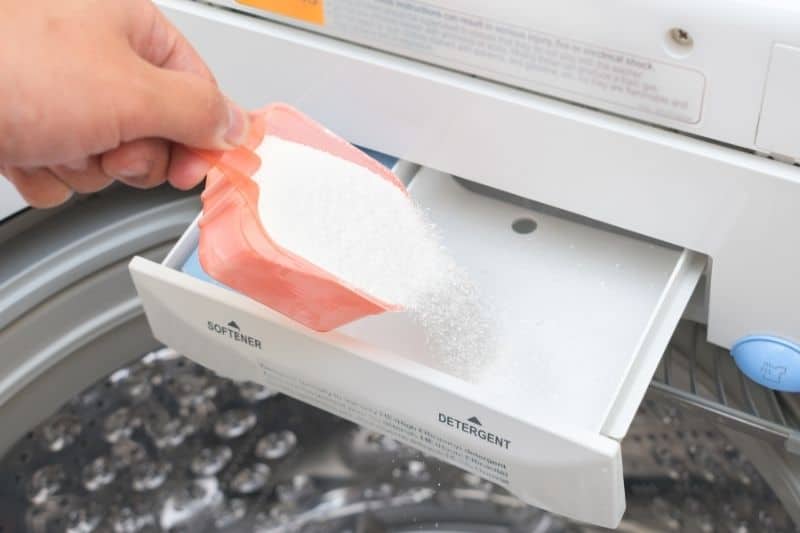
This may lead to your washing machine leaking out some foamy-looking liquid onto your floor.
Solution:
Don’t add too much detergent in. Only use the amount of product that you need.
And if you do go overboard with detergent, run an empty cycle weekly to clean out the excess product.
Cause 4: Washing machine is not level
When you set up your washing machine, you’re supposed to make sure that the ground it’s sitting on is level. Okay, you may not be able to get it spot on, but near enough to perfect is fine.
Not levelling the washing machine can cause all kinds of problems from leaks to a noisy washing machine. It’s not very pleasant either way.
But the issue can be resolved quickly.
Solution:
If you think your watery problem is caused by an unlevel washing machine then you need to level the washing machine correctly.
You need to turn the water and power supplies to the appliance off and move it around until you find a good spot.
Raise/lower the legs if possible, and if you need to slot a tile under the washing machine to raise it on one side, do so.
Don’t forget to use a spirit level!
Cause 5: Seals and gasket
Washing machines come with lots of seals! Unfortunately, every single one of them will degrade over a period of time, as will the gasket inside the appliance.
This means that leaks are inevitable and pools of water under the machine are likely to occur.
Solution:
You need to check your seals at least every month to make sure that they’re okay. If you do this you can prevent massive problems from occurring – like leaks!
Plus, when you’re keeping an eye on your washing machine’s seals you can give them a quick clean, so you help them to thrive for longer.
Although, when the seals/gasket in a washing machine break, it does only mean one thing – it’s time to replace them. You can usually replace seals/gasket for a decent price and you can do it yourself.
Cause 6: Water pump
The water pump plays a pivotal role in your washing machine! It’s responsible for pushing the water from the tub and into the drain hose.
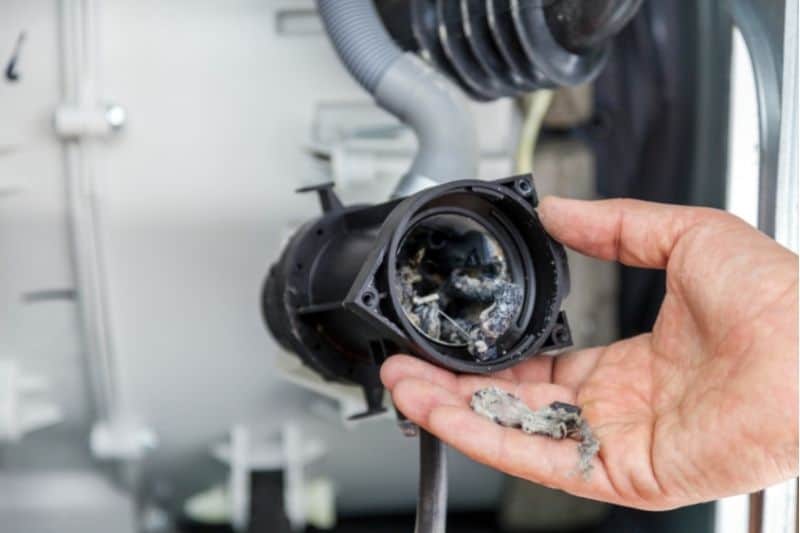
Sadly, with time this part gets worn down. So much so, that it can cause leaks.
Solution:
You can buy a new pump to replace an old or broken one.
You should check your user manual to see how you remove the water pump from your appliance, and to check how you put a new one in.
Cause 7: Blocked filter
Occasionally, the filter in your washing machine gets clogged up with bits of fibre, and this results in some water leaking out of the appliance.
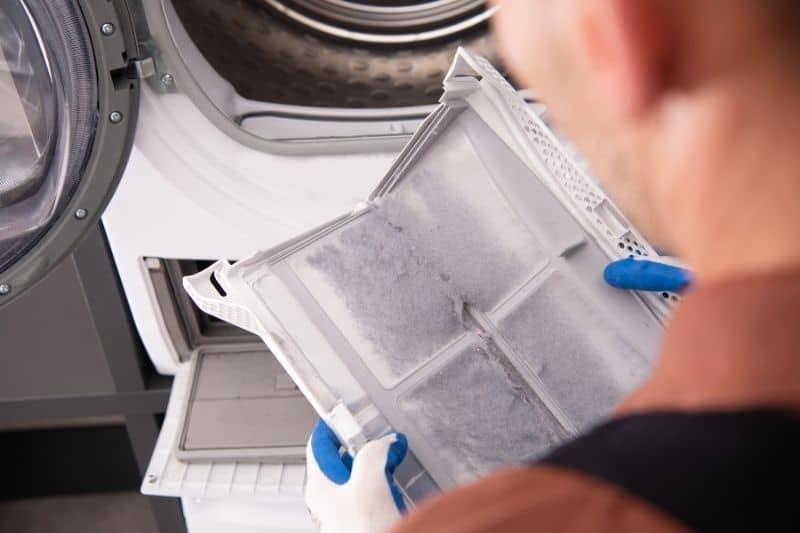
If this is the problem you will be able to see small droplets of water dripping from the bottom of your washing machine. You may assume that the water is coming from under the machine, but it will actually be coming from the front. But it’s an easy mistake to make.
It’s simple to resolve this problem though!
Solution:
To fix this problem all you need to do is, locate your washing machine’s filter, remove it and clean it. When the filter is being cleaned, put a tray under the front of the washing machine to catch the excess water.
To clean the filter, all you need to do is hold it under the hot water tap and use a gentle toothbrush to clean off any dirt you see.
Conclusion
Although water pooling under your washing machine might seem like a complete nightmare at first, there’s usually a pretty good reason why the water is there.
Consider where the water is coming from, decide what the likely cause is and follow the solution listed above so that you can eradicate the problem.
If you know of a cause that isn’t listed above, let me know in the comments.

Bethan has a passion for exploring, reading, cooking and gardening! When she’s not creating culinary delights for her family, she’s concocting potions to keep her house clean!
